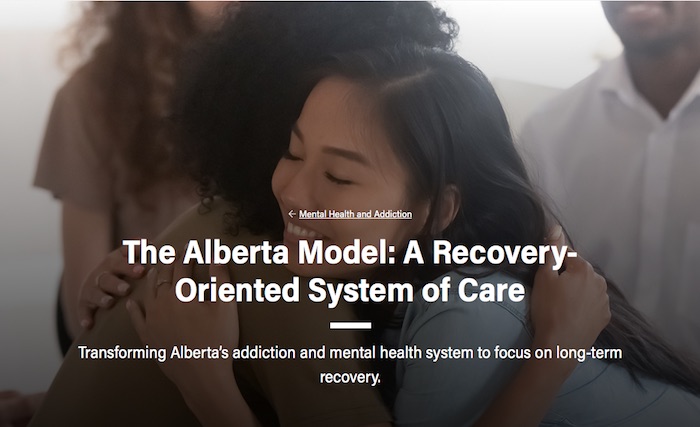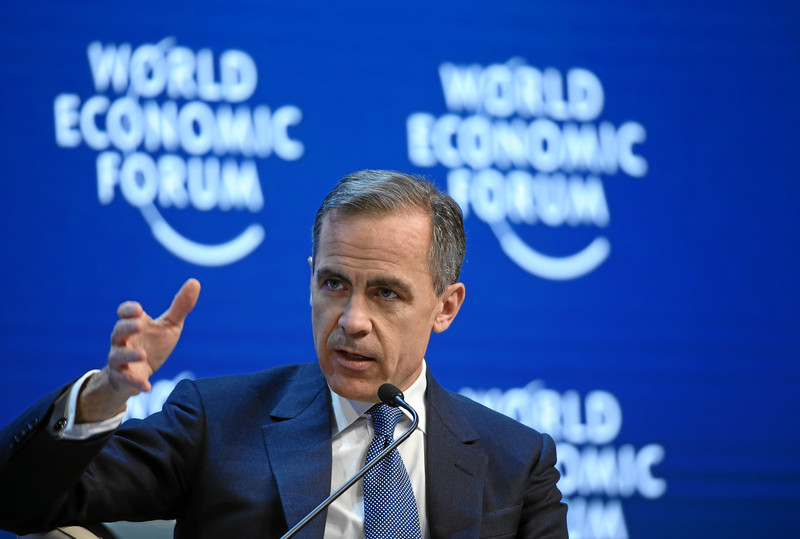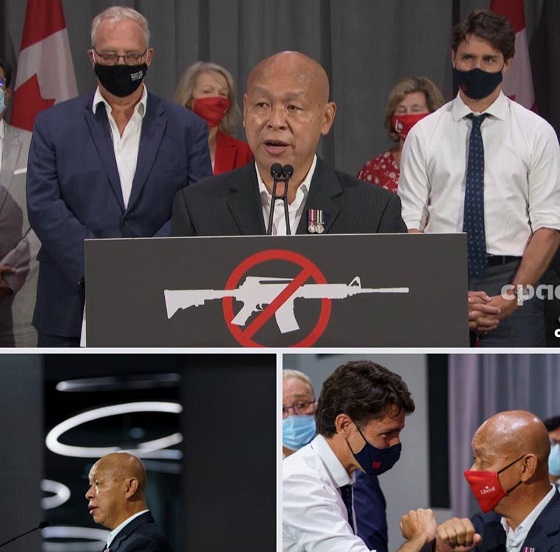Alberta
Province commits $4 million for overdose response teams and 35 detox and pre-treatment beds in Calgary

Expanding access to detox and recovery in Calgary
Alberta’s government is investing in detox, recovery and dynamic overdose response services at the Drop-In Centre in Calgary.
Every Albertan struggling with addiction deserves the opportunity to pursue recovery. As part of building a recovery-oriented system of care, Alberta’s government is providing more than $4 million to the Calgary Drop-In Centre to create dynamic overdose response teams and establish 35 medical detox and pre-treatment beds, capable of supporting up to 1,000 Calgarians every year.
This partnership stems from the efforts led by the Calgary Public Safety and Community Response Task Force to improve public safety while treating addiction and mental health as healthcare issues.
“We’re continuing to treat mental health and addiction as health-care issues by building recovery-oriented systems of care to ensure every Albertan has the opportunity to pursue recovery. Whether it’s rapidly responding to an overdose, accessing medical detox or pre-treatment, the impact of this funding will be life-saving and life-changing for so many Albertans.”
“Our government’s focus on addiction recovery and supports for those facing homelessness is bringing positive change for Calgary. The Calgary Drop-In Centre does incredible work to provide services for many individuals facing homelessness. With more access to addiction recovery treatment, more Albertans will be able to get the help they need to overcome their challenges.”
With this funding, the Calgary Drop-In Centre will significantly increase its treatment capacity. This includes:
- 15 medical detox beds and 20 pre-treatment beds: Albertans struggling with addiction will be supported to safely withdraw from drugs or alcohol under medical supervision. They will also be provided with pre-treatment support to prevent relapse and better understand treatment options as they continue their pursuit of recovery.
- Dynamic overdose response teams: To keep communities safe while treating addiction as a health-care issue, the Calgary Drop-In Centre will work in conjunction with local paramedics, first responders and community organizations to respond to overdoses both at the Drop-In Centre as well as in the community.
“People struggling with mental health and addiction deserve compassion and support, and at the Drop-In Centre they receive both. We’re pleased to work with Alberta’s government to deliver critical services to those in need and help more vulnerable people in our communities pursue recovery from addiction.”
These additional medical detox and pre-treatment beds, capable of supporting up to 1,000 Calgarians every year, will be life-saving and life-changing for countless people in the years to come. All publicly funded detox, treatment and recovery spaces are free for Albertans, with no user fees.
Alberta’s government is continuing to build a recovery-oriented system of care, where everyone struggling with addiction and mental health challenges is supported in their pursuit of recovery. This includes initiatives like eliminating fees for residential addiction treatment, launching the Digital Overdose Response System (DORS) app and expanding access to opioid agonist treatment.
In December 2022, Alberta’s government established two new cabinet task forces to bring community partners together to address the issues of addiction, homelessness and public safety in Calgary and Edmonton. The two Public Safety and Community Response Task Forces are responsible for implementing $187 million in provincial funding to further build out a recovery-oriented system of addiction and mental health care. The initiatives being implemented are part of a fair, firm and compassionate approach to keeping communities safe while treating addiction and mental health as health-care issues.
Quick facts
- Alberta’s government is providing $3.8 million per year, with $1.6 million for dynamic overdose response services and nearly $2.2 million to offer 15 detox and 20 pre-treatment beds, capable of supporting up to 1,000 Calgarians annually. There was also a one-time investment of about $450,000 for capital improvements.
- Clients with opioid addiction will also be able to immediately start on evidence-based opioid treatment medications like suboxone and sublocade through Alberta’s Virtual Opioid Dependency Program.
- Alberta spends more than $1 billion annually on addiction and mental health care and supports, including prevention, intervention, treatment and recovery.
- Any Albertan struggling with addiction can contact 211 Alberta to connect with local services and virtual supports. 211 is free, confidential and available 24-7.
- The Virtual Opioid Dependency Program provides same-day access to addiction medicine physicians and life-saving medications to Albertans across the province. Albertans can call 1-844-383-7688 seven days a week, from 8 a.m. to 8 p.m. daily.
Alberta
Big win for Alberta and Canada: Statement from Premier Smith

Premier Danielle Smith issued the following statement on the April 2, 2025 U.S. tariff announcement:
“Today was an important win for Canada and Alberta, as it appears the United States has decided to uphold the majority of the free trade agreement (CUSMA) between our two nations. It also appears this will continue to be the case until after the Canadian federal election has concluded and the newly elected Canadian government is able to renegotiate CUSMA with the U.S. administration.
“This is precisely what I have been advocating for from the U.S. administration for months.
“It means that the majority of goods sold into the United States from Canada will have no tariffs applied to them, including zero per cent tariffs on energy, minerals, agricultural products, uranium, seafood, potash and host of other Canadian goods.
“There is still work to be done, of course. Unfortunately, tariffs previously announced by the United States on Canadian automobiles, steel and aluminum have not been removed. The efforts of premiers and the federal government should therefore shift towards removing or significantly reducing these remaining tariffs as we go forward and ensuring affected workers across Canada are generously supported until the situation is resolved.
“I again call on all involved in our national advocacy efforts to focus on diplomacy and persuasion while avoiding unnecessary escalation. Clearly, this strategy has been the most effective to this point.
“As it appears the worst of this tariff dispute is behind us (though there is still work to be done), it is my sincere hope that we, as Canadians, can abandon the disastrous policies that have made Canada vulnerable to and overly dependent on the United States, fast-track national resource corridors, get out of the way of provincial resource development and turn our country into an independent economic juggernaut and energy superpower.”
Alberta
Energy sector will fuel Alberta economy and Canada’s exports for many years to come

From the Fraser Institute
By any measure, Alberta is an energy powerhouse—within Canada, but also on a global scale. In 2023, it produced 85 per cent of Canada’s oil and three-fifths of the country’s natural gas. Most of Canada’s oil reserves are in Alberta, along with a majority of natural gas reserves. Alberta is the beating heart of the Canadian energy economy. And energy, in turn, accounts for one-quarter of Canada’s international exports.
Consider some key facts about the province’s energy landscape, as noted in the Alberta Energy Regulator’s (AER) 2023 annual report. Oil and natural gas production continued to rise (on a volume basis) in 2023, on the heels of steady increases over the preceding half decade. However, the dollar value of Alberta’s oil and gas production fell in 2023, as the surging prices recorded in 2022 following Russia’s invasion of Ukraine retreated. Capital spending in the province’s energy sector reached $30 billion in 2023, making it the leading driver of private-sector investment. And completion of the Trans Mountain pipeline expansion project has opened new offshore export avenues for Canada’s oil industry and should boost Alberta’s energy production and exports going forward.
In a world striving to address climate change, Alberta’s hydrocarbon-heavy energy sector faces challenges. At some point, the world may start to consume less oil and, later, less natural gas (in absolute terms). But such “peak” consumption hasn’t arrived yet, nor does it appear imminent. While the demand for certain refined petroleum products is trending down in some advanced economies, particularly in Europe, we should take a broader global perspective when assessing energy demand and supply trends.
Looking at the worldwide picture, Goldman Sachs’ 2024 global energy forecast predicts that “oil usage will increase through 2034” thanks to strong demand in emerging markets and growing production of petrochemicals that depend on oil as the principal feedstock. Global demand for natural gas (including LNG) will also continue to increase, particularly since natural gas is the least carbon-intensive fossil fuel and more of it is being traded in the form of liquefied natural gas (LNG).
Against this backdrop, there are reasons to be optimistic about the prospects for Alberta’s energy sector, particularly if the federal government dials back some of the economically destructive energy and climate policies adopted by the last government. According to the AER’s “base case” forecast, overall energy output will expand over the next 10 years. Oilsands output is projected to grow modestly; natural gas production will also rise, in part due to greater demand for Alberta’s upstream gas from LNG operators in British Columbia.
The AER’s forecast also points to a positive trajectory for capital spending across the province’s energy sector. The agency sees annual investment rising from almost $30 billion to $40 billion by 2033. Most of this takes place in the oil and gas industry, but “emerging” energy resources and projects aimed at climate mitigation are expected to represent a bigger slice of energy-related capital spending going forward.
Like many other oil and gas producing jurisdictions, Alberta must navigate the bumpy journey to a lower-carbon future. But the world is set to remain dependent on fossil fuels for decades to come. This suggests the energy sector will continue to underpin not only the Alberta economy but also Canada’s export portfolio for the foreseeable future.
-

 2025 Federal Election2 days ago
2025 Federal Election2 days agoCanada Continues to Miss LNG Opportunities: Why the World Needs Our LNG – and We’re Not Ready
-

 International1 day ago
International1 day agoGermany launches first permanent foreign troop deployment since WW2
-

 2025 Federal Election2 days ago
2025 Federal Election2 days agoMainstream Media Election Coverage: If the Election Was a NHL Game, the Ice Would be Constantly Tilted Up and to the Left
-

 2025 Federal Election1 day ago
2025 Federal Election1 day agoPoilievre To Create ‘Canada First’ National Energy Corridor
-

 COVID-1923 hours ago
COVID-1923 hours agoMaxime Bernier slams Freedom Convoy leaders’ guilty verdict, calls Canada’s justice system ‘corrupt’
-

 International1 day ago
International1 day agoFREE MARINE LE PEN!’: Trump defends French populist against ‘lawfare’ charges
-

 2025 Federal Election2 days ago
2025 Federal Election2 days agoMark Carney is trying to market globalism as a ‘Canadian value.’ Will it work?
-

 espionage7 hours ago
espionage7 hours agoU.S. Experts Warn Canada Is Losing the Fight Against PRC Criminal Networks—Washington Has Run Out of Patience






